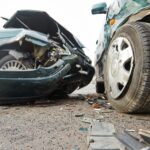
In the aftermath of a car accident, determining fault is crucial for pursuing compensation for injuries and damages. In California, establishing liability requires presenting compelling evidence to support your claim. Here’s a breakdown of the essential evidence needed to prove fault in a car accident case in the Golden State.
Police Reports and Accident Documentation
- Official Police Report: If law enforcement responded to the accident, their report will document important details such as the date, time, location, weather conditions, and statements from involved parties and witnesses.
- Photographic Evidence: Photos of the accident scene, vehicle damage, road conditions, skid marks, and any relevant signage or traffic signals can provide valuable visual documentation of the circumstances surrounding the accident.
Witness Statements and Testimony
- Eyewitness Accounts: Statements from impartial witnesses who observed the accident can corroborate your version of events and strengthen your case.
- Expert Testimony: Accident reconstruction experts may be called upon to analyze the evidence and provide expert testimony regarding factors such as vehicle speed, braking distances, and collision dynamics.
Medical Records and Documentation
- Medical Records: Detailed medical records documenting your injuries, treatments received, and prognosis are essential for establishing the extent of your injuries and the medical expenses incurred.
- Expert Medical Opinion: Testimony from medical experts, such as physicians or specialists, can provide additional support for the severity and long-term impact of your injuries.
Driver Statements and Admissions
- Statements Made at the Scene: Admissions of fault or responsibility made by the other driver at the accident scene can be crucial evidence in establishing liability.
- Recorded Statements: Recorded statements from the other driver or witnesses, obtained shortly after the accident, can help preserve their recollection of events and any admissions made.
Traffic Violations and Citations
- Traffic Citations: Any citations issued by law enforcement at the scene of the accident, such as for speeding, running a red light, or reckless driving, can serve as evidence of the other driver’s negligence.
- Violation of Traffic Laws: Evidence indicating that the other driver violated California traffic laws or regulations at the time of the accident can support your claim of negligence.
Conclusion
Successfully proving fault in a California car accident case requires a thorough investigation and collection of compelling evidence. By gathering documentation such as police reports, witness statements, medical records, and evidence of traffic violations, you can build a strong case to establish liability and seek compensation for your injuries and damages. If you’ve been injured in a car accident, consulting with a qualified personal injury attorney can help you understand your rights and navigate the legal process to pursue the compensation you deserve.
- How Can Evidence Be Preserved After a Personal Injury Accident - April 2, 2025
- How Do Emotional Distress Claims Work In Personal Injury Cases? - March 20, 2025
- What Are the Legal Responsibilities of Property Owners in Preventing Accidents? - March 18, 2025